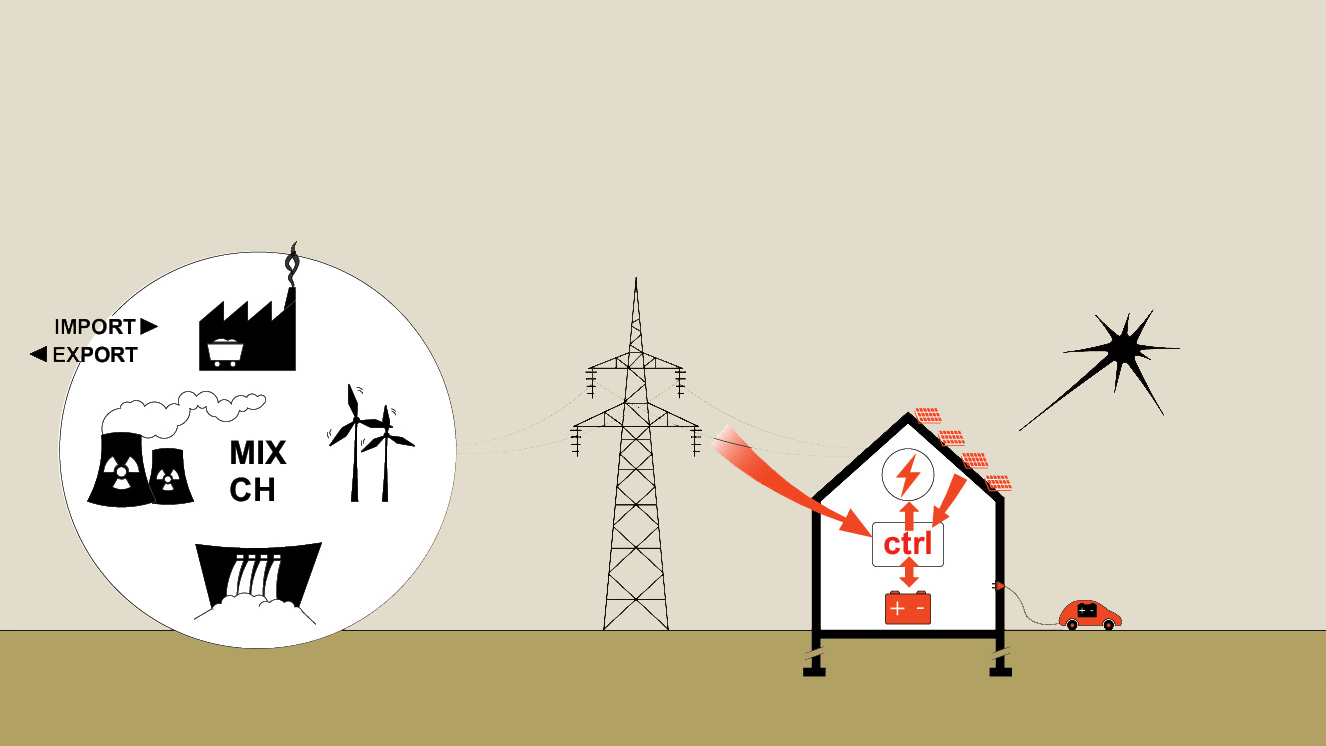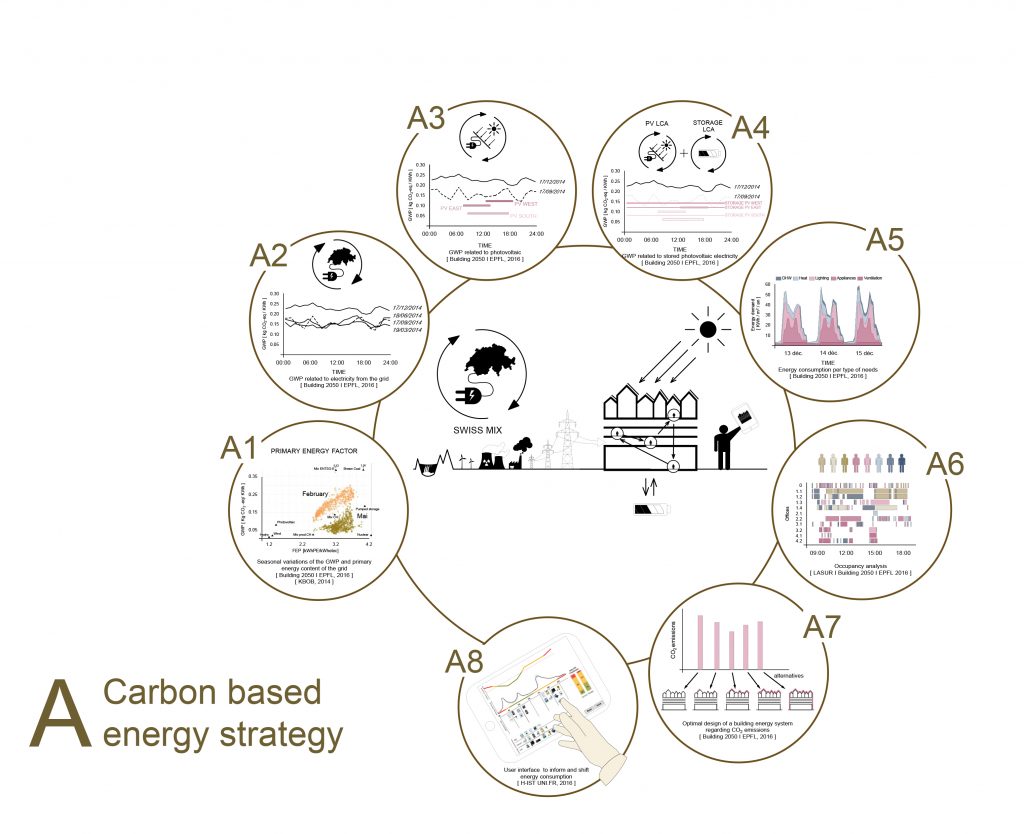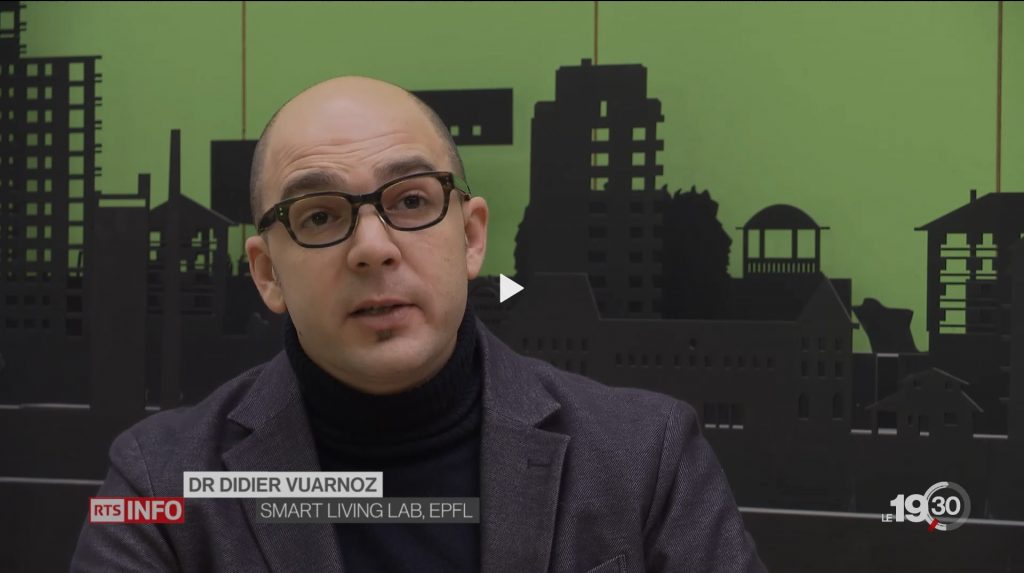Carbon Based Energy Strategy

The outcome sought through this experiment is to optimize the correlation between renewable energy availability and the building’s energy demand, by:
- Using the grid’s energy at the moments when it is greener
- Producing renewable energy in situ
- Storing green energy to be able to use it when the grid is more CO2 charged
- Communicating with users in order to encourage them to plan their energy consumption at the hours of greatest availability of renewable energy, or of better quality of the grid’s energy.
Because renewable energy is not constant, a methodology is necessary to balance carbon footprint on a yearly basis with an hourly time accuracy. This strategy needs to be applied to the grid’s energy supply as well, for the CO2 content of the Swiss grid also varies significantly, due to its different sources and its dependence on imports from less performing grids at certain times of the day or of the year.
The objective of this research was to synchronize a low-environmental-impact electricity supply and the building’s electricity consumption. Nowadays it is still of common practice to use yearly-averaged values of electricity impact factors for LCA. It is also well accepted to size and design renewable and storage energy system on the basis of an annual energy balance (e.g. NZEB). Demand side management is usually considered as an important lever for energy peak shaving.
Adopted approach for the SLB research program on carbon based energy
This research effort represents the first attempt to assess impact factors (CED, CEDnr, GWP) for the Swiss grid at an hourly time step, during a whole year. The influence of their differences as well as the resulting patterns in the temporal evolution of these impact factors have been investigated. The dynamic environmental footprints of the electricity available from the grid was here compared to the ones that could be produced or stored on-site.
This comparison is meant to be used as a decision tool, to design a performing building energy system that will guarantee positive resource payback time.
The potential of a carbon-based electric load shifting has been proposed for GHG emission mitigation at the building level. The assessment results – still under investigation – will indicate if such a strategy is efficient.
For further details, see publications below
Partners
Human-IST, University of Fribourg
Energy Institute, Haute Ecole d’ingénierie et d’architecture de Fribourg
Funding
State of Fribourg – Switzerland
Please note that the publication lists from Infoscience integrated into the EPFL website, lab or people pages are frozen following the launch of the new version of platform. The owners of these pages are invited to recreate their publication list from Infoscience. For any assistance, please consult the Infoscience help or contact support.
Le courant consommé la nuit est chargé en CO2 de charbon allemand
2018-12-13.Integrating hourly life-cycle energy and carbon emissions of energy supply in buildings
Dataset concerning the hourly conversion factors for the cumulative energy demand and its non-renewable part, and hourly GHG emission factors of the Swiss mix during a one year period (2015-2016).
Data in Brief. 2018-12-09. Vol. 21, p. 1026-1028. DOI : 10.1016/j.dib.2018.10.090.Neutral global warming potential target of electricity storage as threshold for greenhouse gas emission mitigation in buildings
2018-12-10. Passive and Low Energy Architecture conference (PLEA 2018): Smart and Healthy within the 2-degree Limit, Hong-Kong, December 10-12, 2018. p. 1217.Integrating hourly life-cycle energy and carbon emissions of energy supply in buildings
Sustainable Cities and Society. 2018-08-29. num. 43, p. 305-316. DOI : 10.1016/j.scs.2018.08.026.Temporal variations in the primary energy use and greenhouse gas emissions of electricity provided by the Swiss grid
Energy. 2018-07-24. num. 161, p. 573-582. DOI : 10.1016/j.energy.2018.07.087.Development and validation of an intelligent algorithm for synchronizing a low-environmental-impact electricity supply with a building’s electricity consumption
2018. The 4th International Conference on Renewable Energy Technologies (ICRET 2018), Kuala Lumpur, Malaysia, January 16-18, 2018.Smart Living Building Research Program – Executive Summary
2017
Building 2050 – Scientific concept and transition to the experimental phase
2016
Graphical representation of the smart living building research program
Building2050 Scientific Workshop, Gruyères, Switzerland, October 2016.Réussir un suivi énergétique efficace et rentable de son bâtiment : outils, limites et facteurs de succès
Build & Connect: TECHNOLOGIES ET PRATIQUES PIONNIÈRES DANS LE BÂTIMENT DURABLE, Strasbourg, France, Novembre 22-23, 2016.smart living building – Living the Future
2016
Studying the Dynamic Relationship between Energy Supply Carbon Content and Building Energy Demand
2016. PLEA 2016 Los Angeles – 36th International Conference on Passive and Low Energy Architecture. Cities, Buildings, People: Towards Regenerative Environments, Los Angeles, California, USA, July 11-13, 2016.Building 2050 – State-of-the-arts and preliminary guidelines
2015


